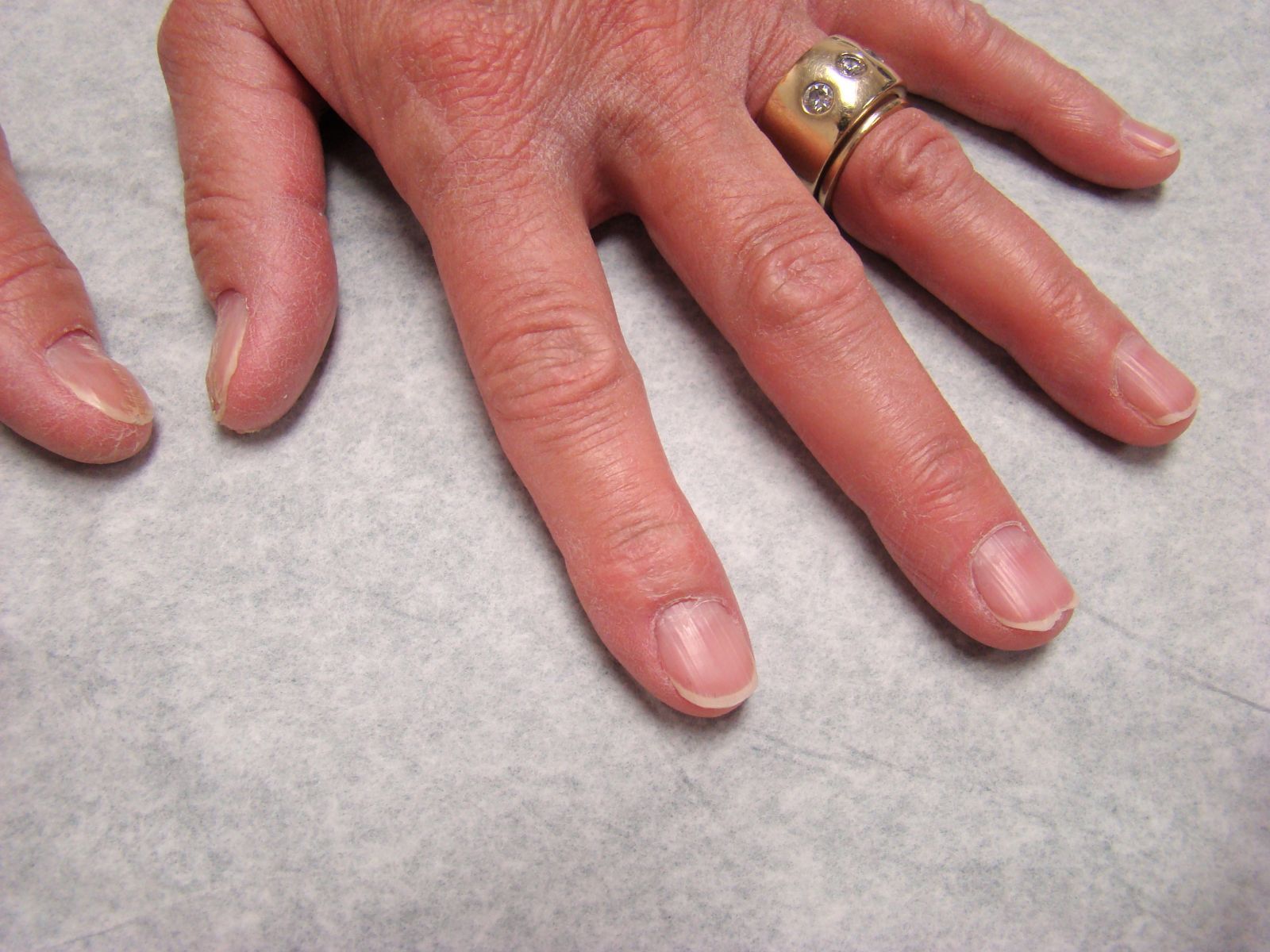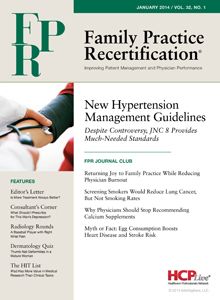Thumb Nail Deformities in a Mature Woman
A 59-year-old woman presented to clinic for evaluation of multiple moles. Although the moles were not suspicious on physical exam, she was noted to have bilateral deformities of her thumb nails. Her past medical history is significant for chronic knee pain and breast cancer that was successfully treated 13 years ago. What is your diagnosis?
a) Beau’s linesb) Mees’ lines
c) Habit-tic deformity
d) Psoriasis
e) Onychomycosis
Diagnosis

This woman has habit-tic deformity of her thumbs with classic midline successive ridges and separation of the cuticles from the nail. This finding is usually due to either repeated trauma from picking the cuticle or a habit of repeated impact or flicking of the nails, hence the repeated series of ridges. On further query, the patient noted that she tends to rub her index fingers over her distal thumbnails and pick at her cuticles.
Other than the abnormal appearance of the nails, this condition is usually asymptomatic. The first line of therapy for halting the behavior of repeatedly traumatizing the cuticle is avoidance or covering it with tape. Treatment with acrylate glue1 or selective serotonin reuptake inhibitors (SSRIs)2 has also been utilized to address cuticle separation and nervous habit, respectively.
Beau’s lines have horizontal ridges involving all or most of the nails. They are due to a significant illness or episode causing a temporary disruption in nail growth that leads to a single horizontal ridge moving distally with nail growth. Chemotherapy could cause Beau’s lines, but this patient underwent treatment much further back in time than the 1 year it takes to grow a new fingernail.
In contrast to the palpable ridges seen in habit-tic deformity and Beau’s lines, Mees’ lines consist of a white line that is classically a result of arsenic poisoning.3 The condition would only appear as a succession of lines if there had been repeated episodes of arsenic exposure.
Psoriasis most classically causes erythematous plaques of the skin, though it also produces psoriatic arthritis and nail changes. However, psoriatic arthritis usually involves the smaller joints of the digits, in contrast to the arthritis in this patient’s knees. The nail findings of psoriasis include pitting and discoloration called “oil staining.” In more severe cases, psoriasis can cause onycholysis — a separation of the nail from its bed.3
Onychomycosis also causes yellowing of the nails, but usually not in the symmetric ridging pattern seen in this patient. The condition is typified by thickening of the nails with subungual debris, and its diagnosis is confirmed by fungal culture, microscopy of nail scrapings, or histology showing fungal elements.4
References
1. Ring DS. Inexpensive solution for habit-tic deformity. Arch Dermatol. 2010 Nov;146(11):1222-3. http://www.ncbi.nlm.nih.gov/pubmed/21079056.
2. Vittorio CC, Phillips KA. Treatment of habit-tic deformity with fluoxetine. Arch Dermatol. 1997 Oct;133(10):1203-4. http://archderm.jamanetwork.com/article.aspx?articleid=559302.
3. Fawcett RS, Linford S, Stulberg DL. Nail abnormalities: clues to systemic disease. Am Fam Physician. 2004 Mar 15;69(6):1417-24. http://www.aafp.org/afp/2004/0315/p1417.html.
4. Karimzadegan-Nia M, Mir-Amin-Mohammadi A, Bouzari N, Firooz A. Comparison of direct smear, culture and histology for the diagnosis of onychomycosis. Australas J Dermatol. 2007 Feb;48(1):18-21. http://onlinelibrary.wiley.com/doi/10.1111/j.1440-0960.2007.00320.x/abstract.
About the Author

Daniel Stulberg, MD, is a Professor of Family and Community Medicine at the University of New Mexico. After completing his training at the University of Michigan, he worked in private practice in rural Arizona before moving into full-time teaching. Stulberg has published multiple articles and presented at many national conferences regarding skin care and treatment. He continues to practice the full spectrum of family medicine with an emphasis on dermatology and procedures.
